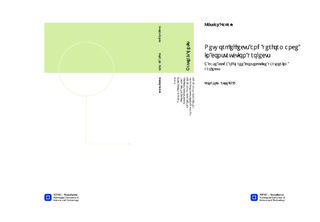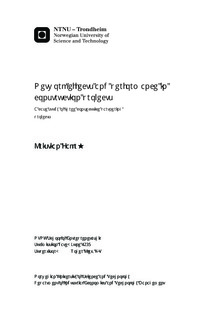| dc.contributor.advisor | Klev, Roger | nb_NO |
| dc.contributor.author | Fallrø, Kristian | nb_NO |
| dc.date.accessioned | 2014-12-19T14:29:41Z | |
| dc.date.available | 2014-12-19T14:29:41Z | |
| dc.date.created | 2014-06-12 | nb_NO |
| dc.date.issued | 2013 | nb_NO |
| dc.identifier | 724515 | nb_NO |
| dc.identifier | ntnudaim:9634 | nb_NO |
| dc.identifier.uri | http://hdl.handle.net/11250/266622 | |
| dc.description.abstract | Partnering in construction has been evaluated in a myriad of studies. The majority of these studies indicate positive outcomes by introducing the concept. However, several researchers have questioned the quality and objectivity of these studies.This thesis presents a novel approach to partnering evaluation in construction projects. The method presented is based on research articles concerned with network effects, the learning curve concept, partnering in construction and performance measurements. The objective has been to develop a practical, objective and in-depth method for evaluating the performance of partnering projects.The novel approach to partnering evaluation is applied in a case study of three construction projects conducted by the same main contractor. The three projects present a low degree of variation and are all the same type of building.Performance measures are conducted of all involved firms in the projects including engineers, architects, sub-contractors and suppliers. 105 contracts were analysed across the three projects. 67 of these contracts were fulfilled by firms without previous working experience with the main contractor. 38 contracts were fulfilled by firms that had delivered on a similar contract in a previous construction project with the main contractor.An analysis of construction project documentation identified 14 events that affected time, cost and quality performance. The events ranged from minor to major issues and/or disputes. Of these 14 events, 11 were related to firms without previous working experience with the main contractor.The case study concludes that firms fulfilling the same type of contract across several similar projects with the same main contractor performs better than firms without previous experience in a related project type.The learning curve effect forms the leading hypothesis for explaining the study findings. By reducing the discontinuities between each project, the overall project performance is improved. The results of this study is expected to be broadly generalizable, as neither the construction type and process nor the main contractor and other firms involved in the study are particularly unique. | nb_NO |
| dc.language | eng | nb_NO |
| dc.publisher | Institutt for industriell økonomi og teknologiledelse | nb_NO |
| dc.title | Network effects and performance in construction projects: A case study of three consecutive partnering projects | nb_NO |
| dc.type | Master thesis | nb_NO |
| dc.source.pagenumber | 46 | nb_NO |
| dc.contributor.department | Norges teknisk-naturvitenskapelige universitet, Fakultet for samfunnsvitenskap og teknologiledelse, Institutt for industriell økonomi og teknologiledelse | nb_NO |

